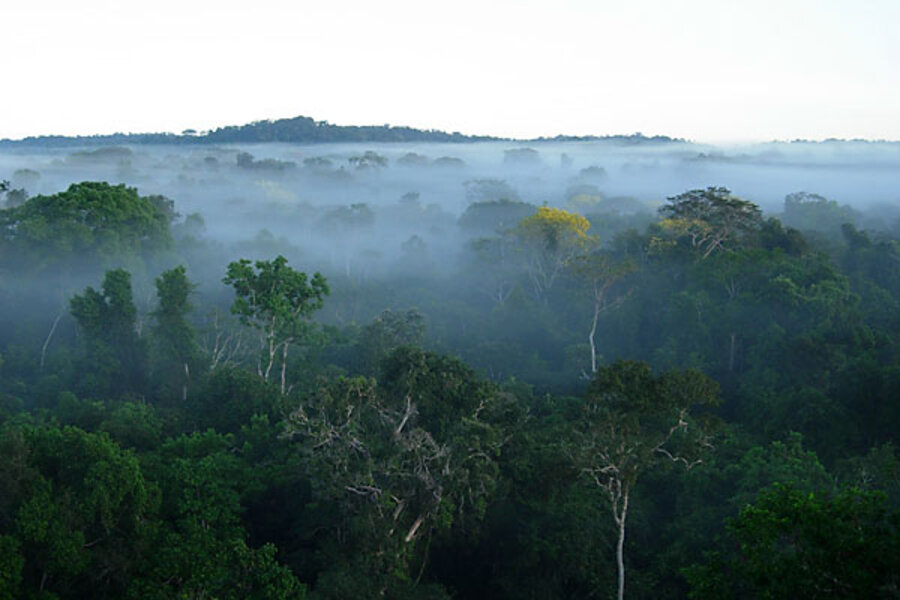After 300 years, Amazon rainforest tree list nears 12,000 species
Loading...
A new study of all known tree specimens taken from the Amazon rainforest over the past 300 years has counted some 11,676 species – and they aren't done yet, say scientists.
The study, published in the journal Scientific Reports, used more than 500,000 digitized records from museum collections reaching back to 1707 – including photographs of fruits, flowers, and leaves – stored on scientific aggregators like IDigBio.
Those records included inventories of the first European botanists who visited the Amazon.
"The checklist gives scientists a better sense of what's actually growing in the Amazon basin, and that helps conservation efforts," said co-author Dr. Hans ter Steege, an ecologist from the Naturalis Biodiversity Centre in the Netherlands.
The team's methods suggest that another 4,000 species of trees have yet to be discovered in the Amazon, say researchers.
"Since 1900, between 50 and 200 new trees have been discovered in the Amazon every year," said Nigel Pitman, a co-author and ecologist at the Field Museum in Chicago. "Our analysis suggests that we won't be done discovering new tree species there for three more centuries."
The findings may have delivered a bit of vindication for the team. In 2013, they drew criticism from other scientists when they estimated that 16,000 tree species exist in the Amazon, based on a 5,000-tree sample that tracked patterns of commonness, rareness, and richness. The latest report appears to lend credence to the team’s previous estimate. Dr. Steege told The New York Times that the findings were "great news [that] supports our Amazon of 16,000.”
The study also took note of the waxing and waning of botanists’ efforts to collect tree specimens in Amazonia over the centuries, finding three major peaks in the years around 1840, 1920, and 1980. It attributed those peaks to growth in flora projects and inventory plots.
Digitization campaigns are often slow, painstaking work, and in many corners of the scientific world, the gap between what’s in physical archives and what’s in digital form is huge. Last year, The Christian Science Monitor reported that in the field of phylogenetics, which studies how living things are related evolutionarily, “only one out of six studies published in about 100 journals in the decade leading up to 2012 have digital data that others can use.”
Natural history museums have increasingly worked to digitize their archives in recent years, spurred in part by new technologies that allow for highly detailed images of specimens, reported The New York Times in 2015.
They still have a long way to go.
“Everybody knows there’s a tremendous amount of information in natural history collections,” said iDigBio director Larry Page. “But the collections are inaccessible to virtually everyone. Even scientists working on particular groups of organisms don’t know what’s contained in the other museums.”






